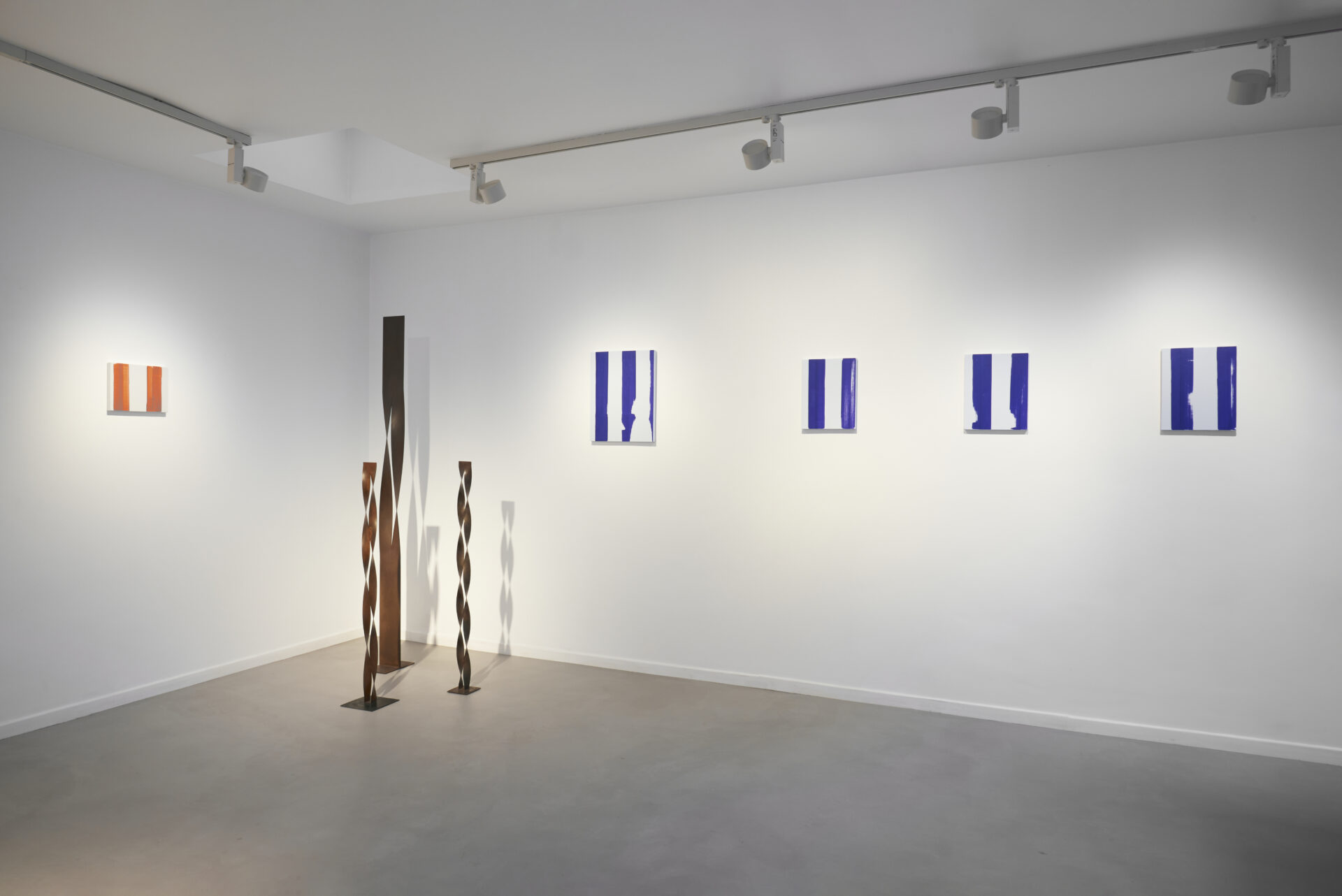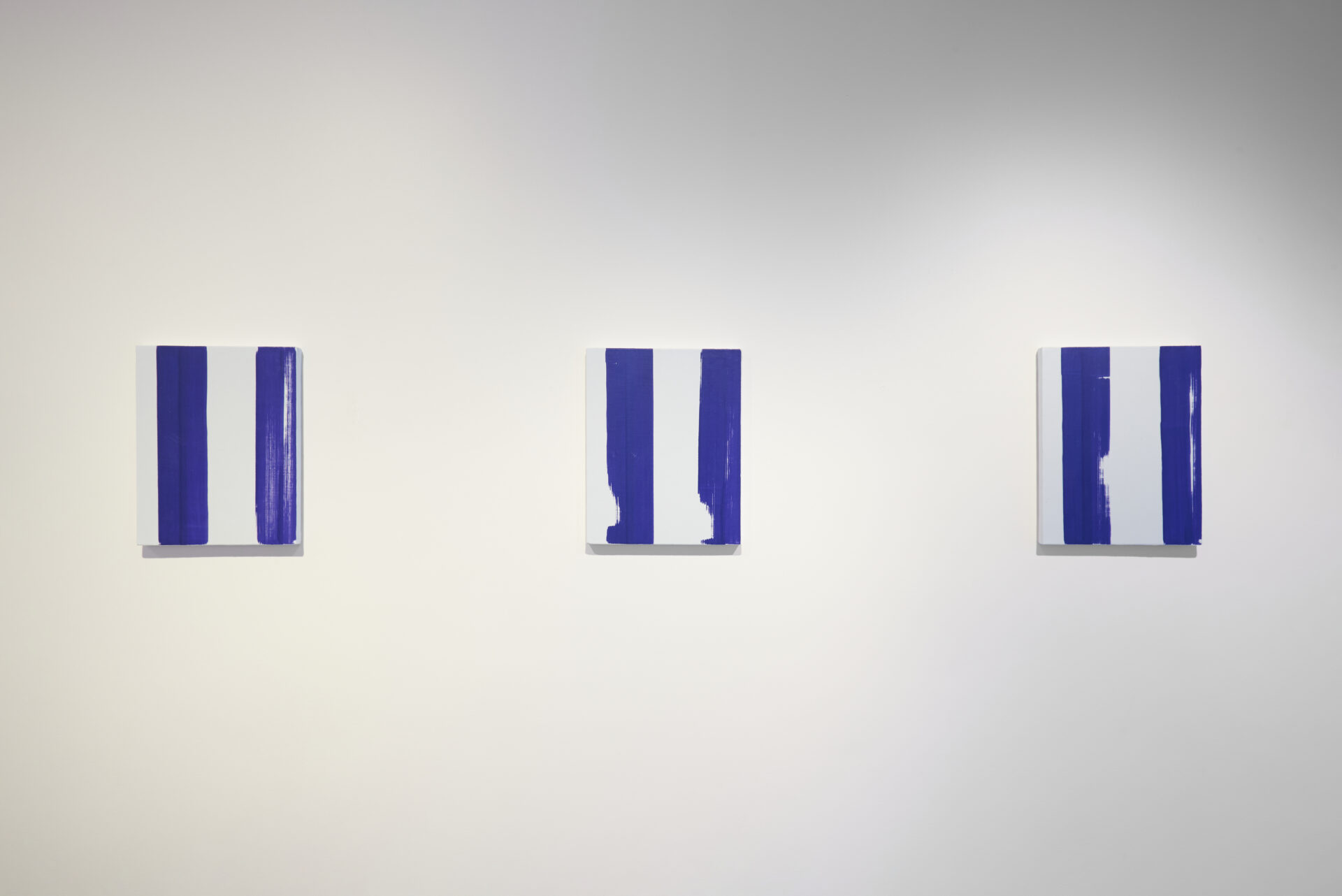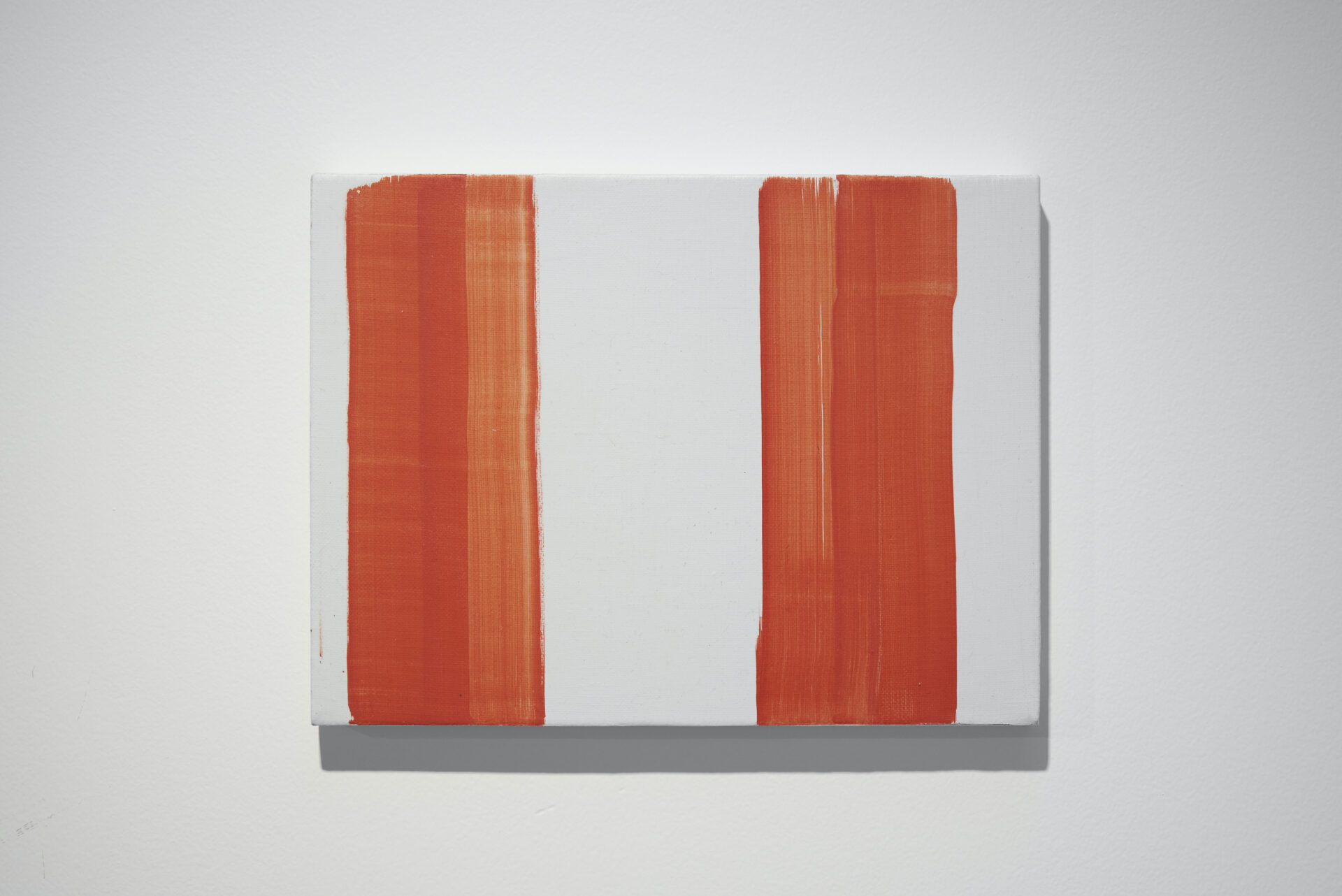19/01/24 & 25/01/24
Mario García Torres
LA Suite
at Fondation Walter & Nicole Leblanc

Installation view at Fondation Walter & Nicole Leblanc, Brussels, 2024 (from left to right: Mario García Torres, LA Suite, n.d., marker on canvas, 23 x 30,5 x 2,2 cm; three Torsions by Walter Leblanc, 1965; LA Suite, n.d., marker on canvas, 51 x 40,7 x 2,2 cm; LA Suite, n.d., marker on canvas, 35,8 x 28,2 x 2,2 cm, each). Photo: Mina Albespy.
MEXICO CITY/BRUSSELS, JAN. 18 — In parallel to his exhibition at Jan Mot (I Can’t See Regret in Here, 09/11/23–27/01/24), Mario Garcia Torres discreetly exhibited a series of five new paintings entitled LA Suite at the Walter & Nicole Leblanc Foundation in Brussels. Under the directorship of María Inés Rodrígrez, the Foundation collaborates with international artists whose practices interact with the historic work of the Belgian artist Walter Leblanc (1932–1986). The following exchange was conducted by email.
Antony Hudek: What relation do you see between the ‘Spoiled Paintings’ at Jan Mot and the ‘secret’ works at the Leblanc Foundation?
Mario Garcia Torres: Well, not much. They both come from a certain conceptual approach to painting, although LA Suite is in fact timidly trying to cross that discourse. It’s one of the reasons I started to explore the actual making of lines – the most simple, straightforward exercise there is in painting. At the same time, I could argue, they are not paintings, or at least they pose the question, which I’m interested in, of what in fact constitutes painting.
AH: Given the breadth of your practice, how would you qualify your relationship to ‘painting’ (in general) and to ‘abstract painting’ in particular?
MGT: For many years I refused to paint. Oh, there are so many problems with painting, I wouldn’t know where to begin. But then, at a given moment, you are willing to wrestle with these problems instead of looking elsewhere. There is something appealing in fact, to enter that story, and to enter the subtleness when it comes to abstract forms on a bidimensional object. I used to believe that there was nothing political about painting, but now I understand that every choice in painting is a political act. In that sense, and I suppose that my past works would suggest as much, I am more interested in the complex thought processes that abstraction can bring, and not the straightforwardness of figurative practices. I have always been interested in time, which I have explored in different works, and at some point I realized that the contemplative nature of bidimensional works, of works you can look at for long time (in my case this is only a hope), can explore that too.
AH: Your work frequently references other artists – often those on the margins of art history, or who sought out the margins. This isn’t the case of Daniel Buren. To what degree can we detect traces of Buren in these stripe paintings?
MGT: Buren is extremely evident in LA Suite, I would say. I am, in fact, hoping that the question comes up. This is one of the things I am most interested in provoking. When I started to work on these paintings, I began simply by making lines, and by asking the most basic questions: should they be straight, and if so what does that mean, how thick or how strong should they be, and what does that do? How does repetition (another thing I have explored in a more performative way in older works) function? I was surprised to realize that Buren’s lines somehow work aesthetically better than many other exercises. They could be connected to expression, but the most subtle version of expression. I started to ask myself: was it Buren who got it right, or the manufacturer of those canvases? Would someone who has never seen those stripes agree they are the right width? I became interested in the impact that a work of art has in that subtle space of the imaginary. That is why I allowed myself to make these works.
AH: The problem with secrecy is that the moment it is known, it is no longer a secret. How far would be too far in showing or speaking about these works?
MGT: I guess the works are out now. But yes, the idea of showing them at the Walter & Nicole Leblanc Foundation started with the idea of creating a space between the studio and the gallery – a ‘critical’ space, like a studio but that would allow for small groups of people to see and discuss the works. I wanted to figure out how they functioned. How much Buren was there, and how much the works could be seen within the gestural discourse of painting.
AH: The ambition of controlling chance has a long tradition in art. So does celebrating gestural ‘errors’. Where do these ‘stripe’ paintings sit in relation to error and chance?
MGT: Absolutely, the struggle between perfection and the accident is at the core of the series. At the end they are a conceptual exercise that knows beforehand that it will be a failure.
AH: Do the works at the Leblanc Foundation belong to a closed series – a discreet experiment – or can we see in them a field of future investigation?
MGT: Right now, I am intrigued enough to develop them. But I guess that is something unpredictable as well.

Mario García Torres, LA Suite, n.d., marker on canvas, 35,8 x 28,2 x 2,2 cm (each). Installation view at Fondation Walter & Nicole Leblanc, Brussels, 2024 (Photo: Mina Albespy).

Mario García Torres, LA Suite, n.d., marker on canvas, 23 x 30,5 x 2,2 cm. Installation view at Fondation Walter & Nicole Leblanc, Brussels, 2024 (Photo: Mina Albespy).